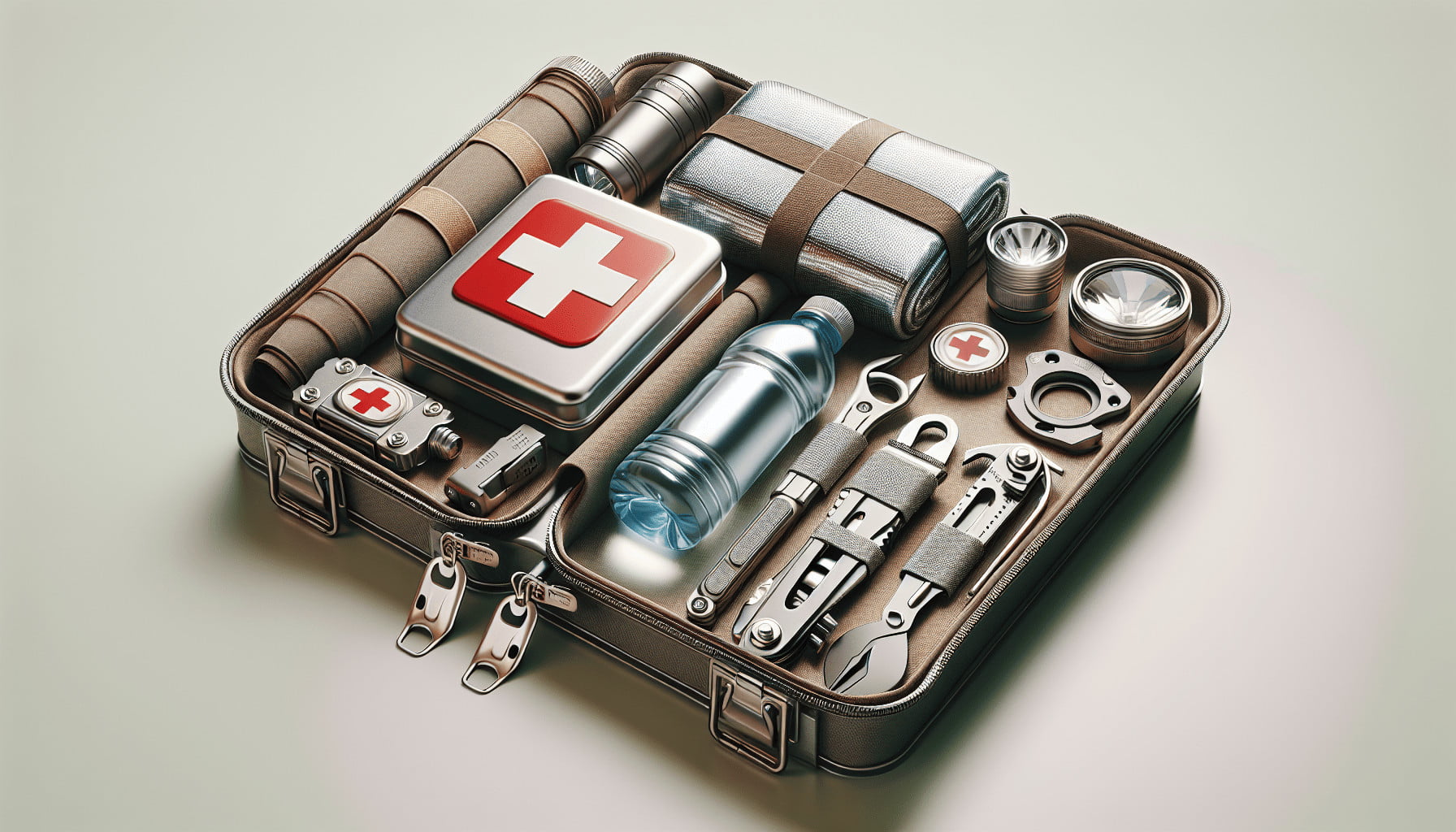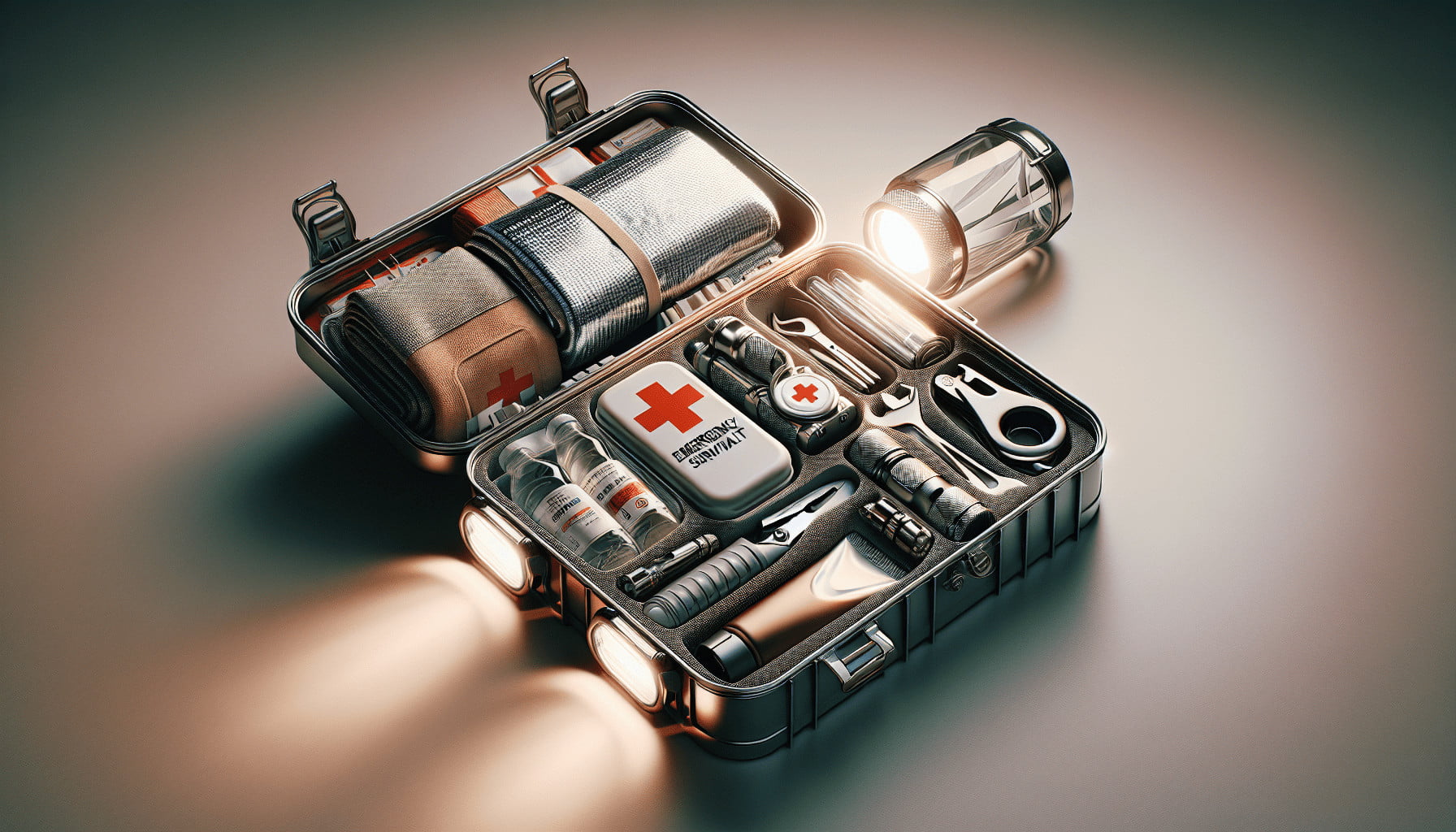Emergency Preparedness For Personal Safety” is essential reading for anyone looking to safeguard themselves in unexpected situations. Picture yourself in an emergency—what’s your plan? This guide illuminates practical steps to ensure you’re ready for anything, from natural disasters to everyday accidents. You’ll discover tips on creating a comprehensive emergency kit, staying informed about potential threats, and developing a clear action plan tailored to your unique circumstances. With this knowledge, you’ll feel empowered and more secure in your ability to handle whatever comes your way. Have you ever thought about how prepared you are for an emergency? Whether it’s a natural disaster, a sudden accident, or an unexpected threat, knowing what to do in a crisis can make all the difference. In this guide, we’ll explore the essentials of emergency preparedness for personal safety, giving you the knowledge and tools you need to stay safe and secure.

Understanding Emergency Preparedness
First things first, what exactly is emergency preparedness? It’s all about planning, organizing, and staying informed. Essentially, it’s how you get ready to respond to different kinds of emergencies.
Why Is Emergency Preparedness Important?
Imagine losing power for several days, or even getting stuck in your home due to a snowstorm. Being prepared doesn’t just mean stocking up on food and water; it’s about having a comprehensive plan. It means thinking in advance about what you would need to survive and be comfortable in various scenarios.
Assessing Your Risks
Every region has its own set of risks. Understanding these specific risks is the first step in being prepared.
Regional Disasters
Depending on where you live, you might be more susceptible to certain types of natural disasters. For example:
- Earthquakes are more common in places like California.
- Hurricanes hit coastal areas regularly.
- Tornadoes are frequent in the Midwest.
Personal Vulnerabilities
Do you have health conditions that require medication or specialized equipment? Knowing your own vulnerabilities can help you plan more effectively.
Building an Emergency Kit
Your emergency kit is your lifeline when disaster strikes. Let’s break down what should go in a robust emergency kit.
Basic Supplies
Here’s a list of must-have items:
| Item | Quantity | Description |
|---|---|---|
| Water | 1 gallon per person per day | Enough for at least three days |
| Non-perishable food | 3-day supply | Canned goods, dried fruits, nuts |
| Medications | 7-day supply | Prescriptions, over-the-counter pain relievers, vitamins |
| First-aid kit | 1 | Bandages, antiseptics, tweezers, medical tape |
| Flashlight | 1 | Extra batteries |
| Multi-tool | 1 | Knife, pliers, screwdrivers |
Special Items
Don’t forget about items that may not be on everyone’s radar but are no less important:
- Pet supplies: Food, water, medications for your furry friends.
- Baby needs: Formula, diapers, wipes.
- Important documents: Copies of IDs, insurance policies, and emergency contact numbers.
Comfort Items
While it’s crucial to meet your basic needs, a few comfort items can make a stressful situation more bearable:
- Books or magazines: To keep your mind occupied.
- Games and puzzles: Great if you have kids.
- Personal hygiene items: Toothbrush, toothpaste, soap.
Creating an Emergency Plan
Now that you have your kit ready, the next step is to create a detailed emergency plan.
Communication Plan
In an emergency, communication is often disrupted. Having a pre-arranged plan can make a world of difference.
- Family meeting spot: Choose a designated spot both inside and outside your neighborhood where your family will meet.
- Emergency contacts: Make a list of emergency contacts and ensure every family member has a copy.
- Alternate communication methods: Cell towers might be down. Learn how to send text messages or use social media to let people know you’re safe.
Evacuation Routes
Identify multiple evacuation routes in your area because the one you planned might not be usable during an actual event.
Practice Drills
Having a plan is excellent, but practicing it ensures that everyone knows what to do in a real emergency.

Staying Informed
Knowledge is power, especially in emergency situations. Here’s how to stay updated.
Emergency Alerts
Sign up for local emergency alerts. Many communities have systems that will send texts or emails with updates.
Weather Apps
Download reliable weather apps to give you real-time updates on any adverse conditions.
Social Media
Follow trusted sources such as local government agencies or emergency services on social media for the latest information.
First Aid Skills
Knowing basic first aid can be a lifesaver. Here are some essential skills you should master.
CPR
Cardiopulmonary resuscitation (CPR) can double or even triple a cardiac arrest victim’s chance of survival. Many community centers offer CPR courses.
Wound Care
Learn how to clean and dress wounds. This can prevent infections and complications.
Basic Medication Knowledge
Knowing which over-the-counter medications to use for different ailments can also be incredibly useful.
Securing Your Home
Your home is your sanctuary, and there are simple ways to make it safer in an emergency.
Fire Safety
Install smoke detectors in every room and test them monthly. Make sure you also have fire extinguishers readily available.
Weather-Proofing
Strengthen your home to withstand natural disasters by:
- Installing storm shutters for hurricanes.
- Reinforcing your roof and securing loose items in your yard.
Theft Prevention
Emergencies can create opportunities for theft. Keep your home secure with strong locks and perhaps even a security system.
Transportation Preparedness
Being ready to move at a moment’s notice is another aspect of emergency preparedness.
Keep Your Vehicle Ready
Make sure your car is always in good working condition and has at least half a tank of gas.
Emergency Car Kit
Pack an emergency kit for your car, including:
- Blankets
- Flashlights
- First aid kit
- Non-perishable snacks
- Water
Public Transportation
Know the public transit routes and schedules, as these can be crucial when your personal vehicle is not an option.
Financial Preparedness
Emergencies often come with unexpected expenses. Financial preparedness helps cushion that blow.
Emergency Fund
Aim to have three to six months’ worth of expenses saved up in an easily accessible account.
Budgeting for Disasters
Include a “disaster fund” in your budget for purchasing items like emergency supplies, or to cover the cost of temporary relocation.
Insurance
Make sure your insurance policies are up-to-date and that they include coverage for natural disasters common in your area.
Psychological Preparedness
Mental resilience is as important as physical preparedness. Stressful situations can take a toll on your mental well-being.
Stress Management Techniques
Practice mindfulness and stress-relief techniques like deep breathing, meditation, or even yoga.
Support Network
Maintain a strong social circle to offer emotional support during challenging times.
Professional Help
Don’t hesitate to seek professional help if you’re struggling to cope with the stress or aftermath of an emergency.
Special Considerations
Some scenarios might require additional planning and resources.
Elderly Family Members
Make sure they have all the necessary medications, and ensure their mobility devices are ready to go.
Disabilities
If you or a family member have a disability, tailor your emergency plans to accommodate special needs.
Community Resources
Familiarize yourself with community resources such as shelters or relief organizations that can provide help when needed.
Conclusion
Emergency preparedness for personal safety isn’t a one-size-fits-all solution. It requires thoughtful planning, continuous learning, and regular updates to your plans and kits. By being prepared, you offer yourself and your loved ones the best chance of staying safe during unforeseen events. So take the time to prepare now—it could save you a lot of heartache down the road. Stay safe!
